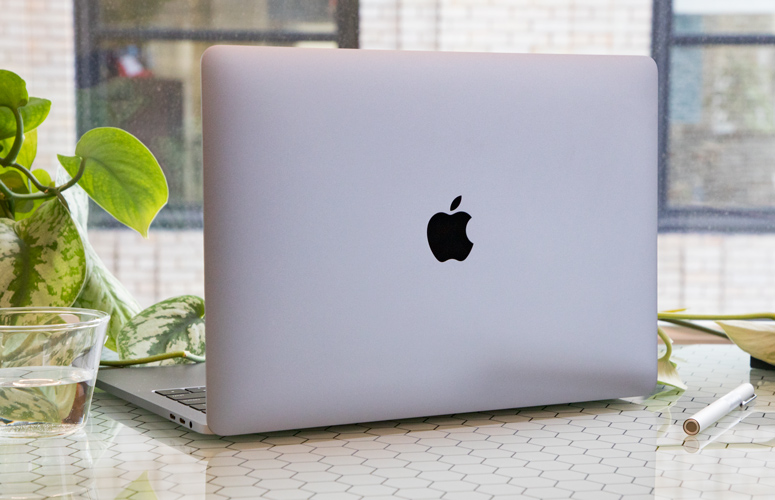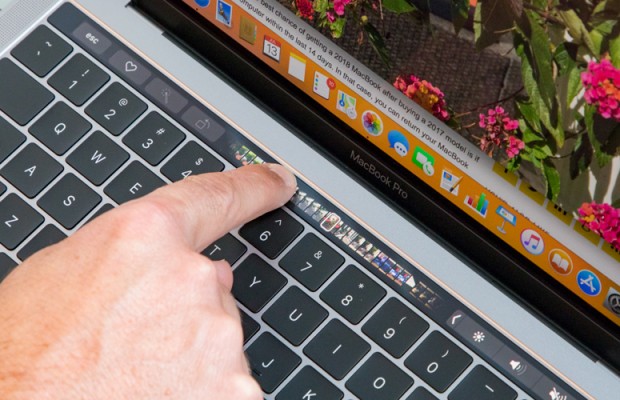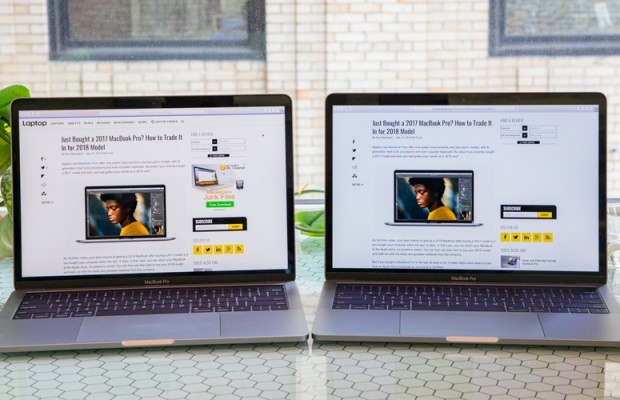MacBook Pro 2019: What to Expect (and What We Want)
June 1 Update: Expect more 2019 MacBook Pros, details below.
What does Apple have planned for the MacBook Pro in 2019? This year's model added some major features, such as blazing-fast processors, True Tone display technology and a quieter keyboard, which checked off plenty of items on our wish list and made for one of the best Apple laptops yet.
But as we look toward the future, the problems Apple needs to solve for its next high-end notebook aren't as obvious. Here's what we think 2019 holds for the MacBook Pro, as well as what we want from the new year's model.
News & Rumors (July 2019)
- The FCC has approved a new MacBook Pro, which could be the 16-inch MacBook Pro.
- The rumored 16-inch MacBook Pro is the topic of a lot of discussion. It's still targeted for 2019, after a mis-translation made some think it was delayed to 2020, or even 2021.
MacBook Pro 2019 Release Date and Possible Pricing
If history is a precedent, the next MacBook Pro should come somewhere after the middle of 2019. For the last six years, Apple's released most of its MacBook Pro updates in June, July or October, with one exception.
Oct. 27, 2016 - The launch of the 4th Gen MacBook Pro, the Type-C-only model sold today, which includes the OLED Touch Bar and 2nd-en butterfly switch keys.
Sign up to receive The Snapshot, a free special dispatch from Laptop Mag, in your inbox.
June 5, 2017 - Apple adds Intel's Kaby Lake processors to the MacBook Pro.
July 12, 2018 - The Touch Bar-equipped MacBook Pros gained Intel's Coffee Lake processors (up to Core i9), 3rd-gen. butterfly-switch keys, and the T2 chip for security and storage performance.
But as for a more precise prediction of when the new machine will arrive? Tim Bajarin, president of the Creative Strategies firm, said that Apple's MacBook Pro schedule is "dependent on Intel's chips," which makes the timing harder to peg, especially because Apple uses specific versions of processors that other companies don't.
If the 2019 MacBook Pro stays with the Touch Bar, Type-C-only format, expect the 13-inch MacBook Pro to stay at around $1,799 and the 15-inch MacBook Pro to start at $2,399. Apple's held to those prices since this design launched, in 2016.
If Apple redesigns the MacBook Pro, though, expect even higher prices. The 2015 MacBook Pro (which was no slouch) started at $1,299 for the 13-inch model and $1,999 for the 15-inch model.
But it's still hard to gauge how big of an update we'll get this year — or if we'll get any update at all. While MacBook Pro refreshes have happened at least once a year over the last three years, some have been far more miniscule than we'd hoped for.
Avi Greengart, a tech analyst at GlobalData, agreed, noting that Apple's "laptop road map has been far more idiosyncratic" than the company's easily predictable iPhone-upgrade schedule. Just look at the MacBook Air, which went ignored for years.
"I honestly couldn't tell you if the MacBook Pro is going to get an update at all," Greengart continued, before saying his gut leans toward something slight. "If pressed to speculate, I'd lean towards minor changes or none."
Whiskey Lake Processors
The most likely update for a new MacBook Pro would be a processor jump. The move would bring the superfast macOS machines up to the Intel Whiskey Lake processors, which were announced in August of 2018, the successor to 2017's Intel Coffee Lake chips.
MORE: This Could Be the Heart of the New MacBook Air
What does that mean for you? For starters, Whiskey Lake chips add integrated Gigabit Wi-Fi, so expect faster wireless internet. And while the Whiskey Lake chips provide only a minor performance jump over their Coffee Lake predecessors (they both use Intel's 14++ nanometer process), they're expected to pack twice as fast overall performance as 5-year-old Intel computers. And they should have 1.8x better web performance and three times the video-editing speed.
While there is chatter about Apple switching CPUs, potentially moving from Intel to ARM, that's not expected for 2019.
Change for the Touch Bar?
When asked what (if any) features would be the hallmarks of a 2019 MacBook Pro, Greengart listed potential options, including "a rethink of the Touch Bar." We would love to see that change happen, as the Touch Bar currently feels like a failed idea.
Who is this thing actually helping? Sure, it gives you touch buttons for stuff you could click and tap around for, but the primary audience for the Touch Bar is video and audio editors, scrubbing tracks back and forth. So, unless Apple can find ways to make the Touch Bar matter, the company should update the processor and other specs in its non-Touch Bar 13-inch MacBook Pro and make a non-Touch Bar 15-inch MacBook Pro.
Those physical keys are still valuable to those who can't find much use for the Touch Bar (which I primarily use for picking emoji). The new MacBook Air shows that Apple can release a MacBook with both Touch ID and actual Escape and Function keys. And users who prefer that option shouldn't be forced to pay for a touch-sensitive OLED screen above their keyboard that they don't need.
Yes, you can have a virtual Esc key, but trust me — it's too easy to activate accidentally.
An Improved Retina Display
Sure, Apple added its True Tone display technology to the MacBook Pro, but that screen has yet to be perfected. First of all, its bezels could still stand to get thinner. Just look at the nearly edge-to-edge panels on the Huawei MateBook X Pro and the Dell XPS 13.
Sure, this would force Apple to rethink where it places its webcam, but I'm sure those geniuses at Cupertino can come up with something. As long as it's not a notch, most users will be happy.
The 2018 MacBook Pro's 227-pixels-per-inch screens could pack their pixels even denser, as we've seen in the 260-ppi MateBook X Pro (260 ppi). Also, while the wide, 1.6:1 ratio of the MacBook Pro screens may be good for video, the Huawei MateBook X Pro's 3:2-ratio screens allow you to read a bit more at once.
What We Want from the New MacBook Pro
Face ID: It seems like only a matter of time before Apple's Face ID biometric sensors hit the MacBook Pro. While it appears unlikely that the laptop's thin lid and display could fit the TrueDepth camera system needed, I'd bet Apple's trying to figure out how to do it.
Thinner and lighter design: The 15-inch Pro could also stand to be both thinner and lighter, as its 0.6-inch thick, 4-pound chassis is thicker and heavier than that of the Dell XPS 13 (0.5 inches, 2.65 pounds). Also, the MateBook X Pro (0.6 inches, 2.9 pounds) manages to give you a 14-inch screen and is still lighter than the 13-inch, 3-pound MacBook Pro.
Longer battery life: The 13-inch MacBook Pro lasted only 8 hours and 43 minutes on our web-surfing test. I'd love it if Apple could get closer to 10 hours, like the 9:55 time that the MateBook X Pro got. And while the 15-inch MacBook Pro lasted a decent 10 hours and 21 minutes, both the XPS 15 (11:53) and Surface Book 2 (11:34) lasted over an hour longer.
Credit: Laptop Mag
Henry was a contributing writer at Laptop Mag. He penned hundreds of articles, including helpful how-tos for Windows, Mac, and Gmail. Henry has also written about some of the best Chromebooks, and he has reviewed many Apple devices, including various MacBook Air laptops. He is now a managing editor at our sister site Tom's Guide, covering streaming media, laptops, and all things Apple.




